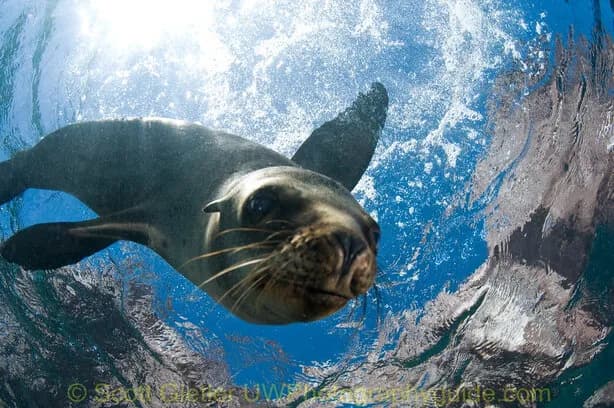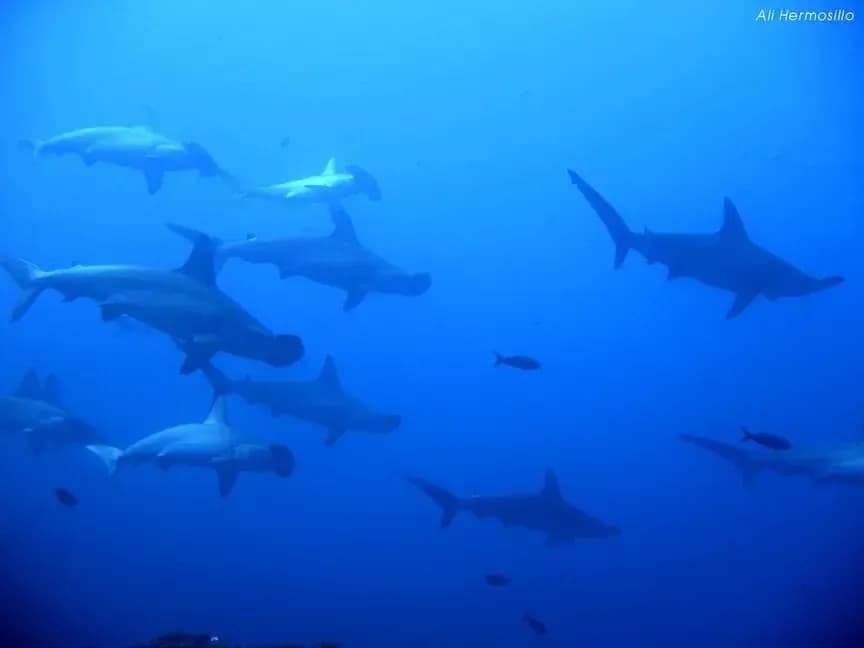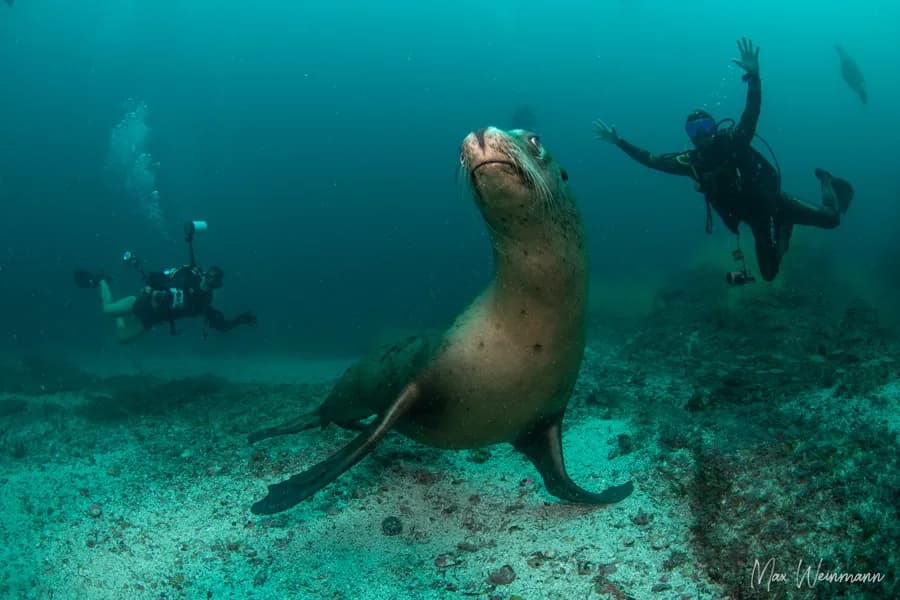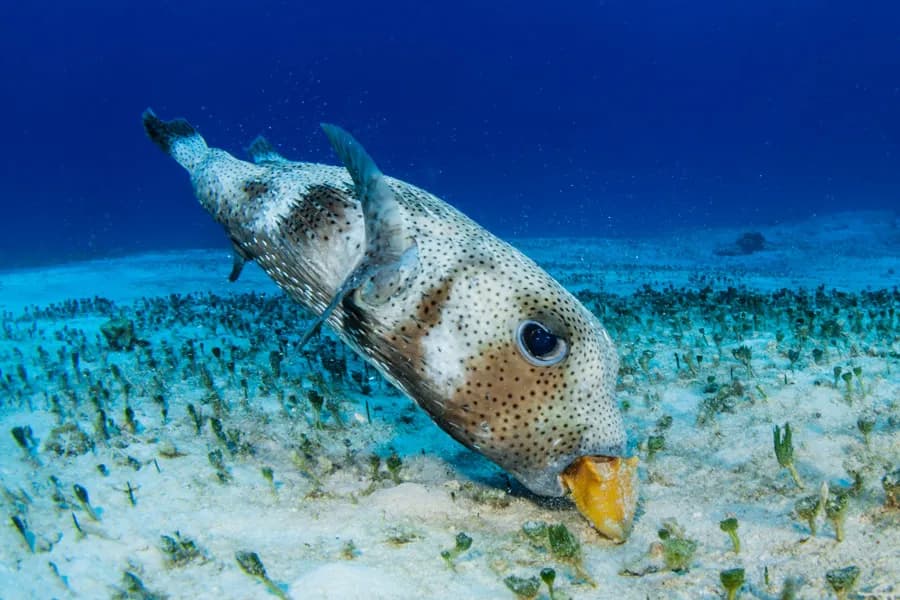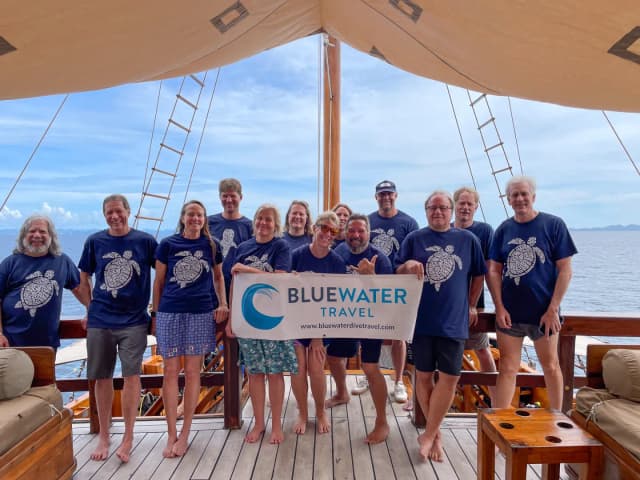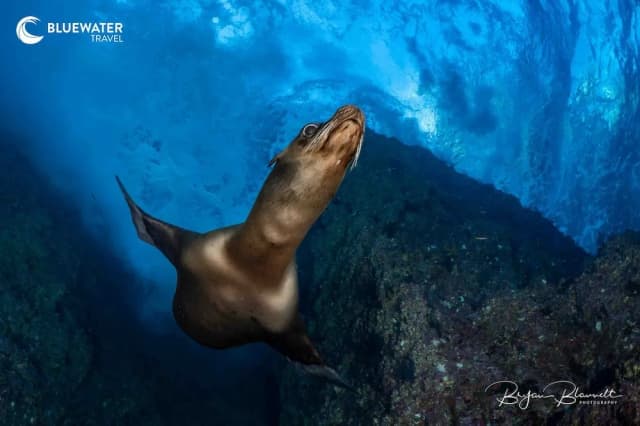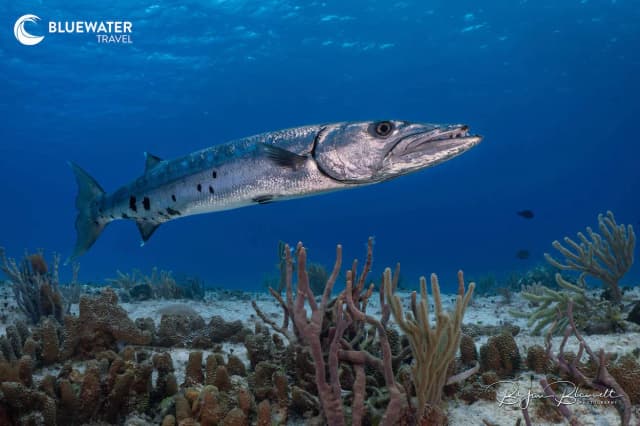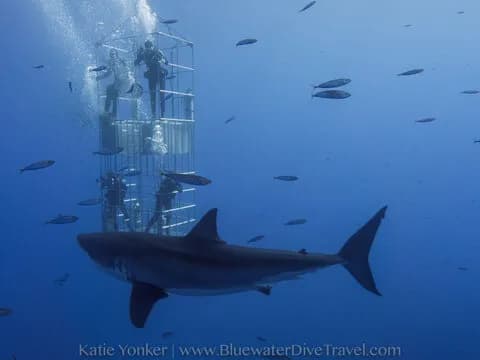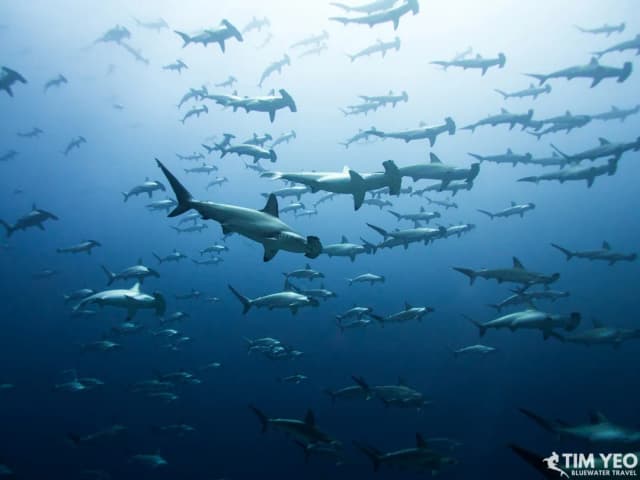Baja California Scuba Diving
Baja California Scuba Diving Highlights
Situated on the west coast of Mexico, Baja California is one of the most diverse yet accessible dive destinations on the planet. This 775-mile-long strip of land separates the Sea of Cortez from the Pacific Ocean, creating a rich and unique marine habitat that is home to numerous endemic species and a wealth of migratory visitors. In 2005, the Sea of Cortez was designated by UNESCO as a World Heritage Site, a testament to the value of this protected dive location.


Offering access to a huge array of wildlife and some world-class scuba diving opportunities, the Baja California and the Sea of Cortez are oft-overlooked dive destinations just a short hop from many US cities. From the tiny critters found at the Midriff Islands to the largest of migratory marine mammals, as well as wrecks, offshore seamounts that attract pelagic visitors, hundreds of islets home to seabirds and sea lions, not to mention the annual whale shark congregations in the Bahia de Los Angeles, Baja California scuba diving really does have it all!
Read more about Mexico's best dive destinations.
View the Sea of Cortez's Location on Google Map
Baja California Diving Destinations
We have picked our top 5 destinations for scuba diving in the Baja California Peninsula and the Sea of Cortez. Read on to discover the best Baja California diving spots and how to make the most of them.
1. La Paz
La Paz is a quaint but well-established resort located two-thirds of the way down the Baja California Peninsulas east coast. This is the perfect dive destination for a family or group getaway, offering a well-established dive infrastructure, countless diving and snorkeling options, and a great range of accommodations and resorts.
Diving the La Paz sites is usually done from shore, with operators offering twoor three-tank daily dives depending on the location. There are various wrecks to explore, as well as some caverns and caves, areas of rocky reef, and several offshore pinnacles that attract hammerhead sharks. The Bay of La Paz offers some great snorkeling spots and is home to sea lion colonies, with individual sea lions making guest appearances on most dives.
Depending on the time of year, divers can expect to spot large migratory species such as whale sharks, hammerhead sharks, mobula rays, and even humpback and gray whales. This is in addition to over 800 species of small and medium-sized reef fish and some notable macro species.
Check out our La Paz destination guide for more information on our top Baja California scuba diving destination.
Practical Information
Diving Season: October and November are the best months to visit the southern Sea of Cortez.
Water Temperature: 72 to 84F (24 to 28C).
Difficulty: All levels of diving, although the offshore seamounts can experience rough swell so are suited to more experienced divers.
Non-diving Activities: Snorkeling with whale sharks and sea lions is a great experience for non-divers, as well as wildlife and fishing excursions, and kayaking trips.
Nearest Airport: Manuel Mrquez de Len International Airport (LAP).
2. Midriff Islands
The Midriff Islands offer some of the most varied diving in Baja California and they are accessible only via liveaboard. This makes for exclusive dive sites and some very unique diving for those who have the opportunity to visit. Highlights include enigmatic critters such as blue-spotted jawfish, orange-throat pike blennies, signal blennies, and a variety of nudibranchs. There are some stunning wide-angle reef scenes to capture, as well as walls of rare black coral. And, of course, countless cheeky sea lions that thrive in the rich waters.
Dive conditions are as varied as the marine life, with changing currents, a wide range of water temperatures, unpredictable visibility, and surprise visits from open ocean visitors. But all this adds to the appeal of these fascinating islands. Topside wildlife is also stunning, with numerous rocky outcrops and uninhabited islands home to fearless seabird populations.
A liveaboard is the only way to explore the Midriff Islands and the best time to visit is July, August, and early September. Check out our trip report from our 2021 Sea of Cortez Photo Workshop which focussed on diving around the Midriff Islands.
Practical Information
Diving Season: Liveaboard trips run in July, August, and the first half of September.
Water Temperature: 72 to 86F (24 to 30C).
Difficulty: All levels of diving, although can sometimes be challenging.
Non-diving Activities: Liveaboards dont offer much for non-divers, although there are some snorkeling and hiking opportunities on some of the islands.
Nearest Airport: Phoenix Sky Harbor Airport (PHX).
3. Bahia De Los Angeles
Four hours south of San Felipe in northern Baja California, Bahia de Los Angeles is an eco-tourism hotspot and designated Biosphere Reserve. Most famous for the scores of whale sharks that migrate to the bay every year, the waters of Bahia de Los Angeles also offer warm and relaxed tropical diving and snorkeling encounters with sea lions, turtles, and a diversity of fish life.
Whale sharks visit Bahia de Los Angeles between August and November every year, following clouds of plankton north through the Sea of Cortez during the summer months. These huge, docile filter feeders gather in their dozens to feed and breed before returning south into the Pacific Ocean at the end of the year.
Snorkeling with whale sharks in Bahia de Los Angeles is heavily regulated and only offered by official tour providers. The start of the season can be unpredictable so make sure to check that the whale sharks have arrived with a local operator. While the panga-style boats carry eight to ten guests, they only allow four swimmers in the water at any one time to reduce stress on the individual fish.
Practical Information
Diving Season: Year round, but snorkeling with whale sharks is available from August through to November.
Water Temperature: 72 to 86F (24 to 30C).
Difficulty: All levels of diving, and also great snorkeling.
Non-diving Activities: Snorkeling is a must, as well as exploring the sleepy local area and conservation museums.
Nearest Airport: Loreto International Airport (LTO).
4. Loreto
Loreto is not typically on the radar for scuba divers, but it definitely should be. This small-town fishing village is not only charming and off the beaten path, but has ample amenities and diving opportunities to satisfy the well-traveled diver. Located about seven hours north of Cabo San Lucas and four hours north of La Paz, Loreto is located near the northern part of the state of Baja California Sur and two-thirds the way down the Sea of Cortez.
Known for its world-class blue whale encounters between January and March each year, Loreto is also a hotspot for spotting other whale species, including humpback whales, gray whales, sperm whales, and a resident pod of fin whales that can be seen year-round. Common dolphins and bottlenose dolphins are also common off Loreto, and a pod of orcas visits the area occasionally.
Diving is mainly conducted around the islands off the coast of Loreto, namely Coronado, Carmen, and Danzante. Living among the reefs are large schools of Graybar grunts, yellowtail surgeonfish, snappers, bigeye jacks, barracuda, black nose butterflyfish, and Panamic sergeant majors. There are also lots of rays, including the endemic bullseye electric ray.
Practical Information
Diving Season: September through November are the best months to dive, although it is possible to dive year-round.
Water Temperature: Low 60F (15C) during the cold months of January through March to mid 80F (26C) in the warm months of September through November.
Difficulty: All levels of diving and also great snorkeling.
Non-diving Activities: Snorkeling is a must, as well as exploring the sleepy local area and conservation museums.
Nearest Airport: Loreto International Airport (LTO).
Learn more about Loreto diving and whale tours.
5. Cabo San Lucas & Cabo Pulmo
The bustling resort town of Cabo San Lucas and the neighboring protected reserve of Cabo Pulmo offer some fantastic opportunities for diving Baja Californias southern tip. Located at the meeting point of the Pacific Ocean and Sea of Cortez, this area is a magnet for large migrating pelagics as well as smaller inshore tropical species. There are also plenty of sea lion colonies along this coast with cheeky individuals making an appearance on most dives.
As well as scuba diving, there are many operators who offer whale watching and marine-life snorkeling safaris. Depending on the time of year it is possible to swim with various shark species, mobula rays, whales, turtles, whale sharks, and manta rays.
Cabo Pulmo is a great destination for families and groups of friends looking for an activity-based vacation. As well as scuba diving there are plenty of other watersports, ATV rental, cultural tours and plenty of bars and restaurants. Alternatively, Cabo Pulmo offers a more remote and low-key option and is the perfect area to relax and get away from it all.


Check out our Explore Baja trips:


Diving Conditions
- Water Temperatures: Average 80oF (27oC) during the summer months.
- Difficulty: All levels of diving and also great snorkeling.
- Visibility: 50 - 115 feet (15 - 35m)
- Non-diving Activities: Marine-life snorkeling safaris, watersports, adventure activities
Baja California/Sea Of Cortez Liveaboards
Find a liveaboard in the Sea of Cortez and book online with the help of our travel experts. Live chat support is available. Best price guaranteed!
Please contact us for the latest availability of MV Valentina.
New to liveaboards?Let's help you get started with our Guide to Liveaboard Diving.
Other Useful Information
Practical Information
- Currency: Mexican Peso (MXN)
- Language: Spanish is the official language in Mexico but most people today learn English as a second language
- Time Zone: UTC-7
- Electricity: 127 V 60 Hz
Got Questions? Ready To Book?
Call us today at +1-310-915-6677 or email us info@bluewaterdivetravel.com
And let us book your dream vacation!
